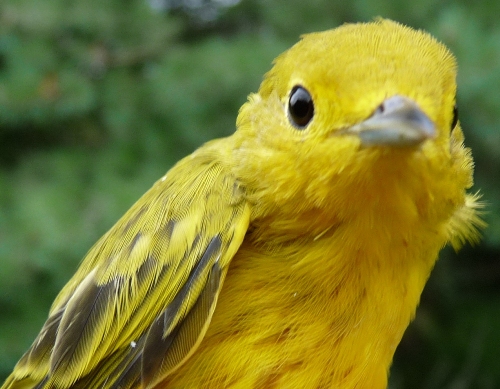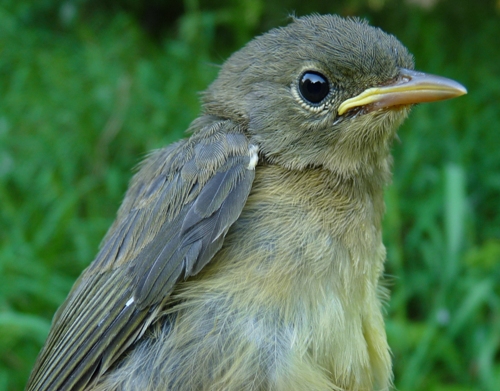|
McGILL BIRD OBSERVATORY |
||||||||||||||||||||||||||||||||||||||||||||||||||||||||||||||||||||||||
Welcome
to the McGill Bird Observatory weekly report.
Click here for a complete listing of our archives.
Banders-in-charge: Simon Duval, Marcel Gahbauer, Gay Gruner Notes: MBO’s fifth full fall season began normally: with a bunch of birds! This week has been nicely busy despite some bad weather, beating last year’s weekly total of 187 birds banded and actually setting a new record for the first week of the fall. Species banded for the first time in 2009 included Downy Woodpecker, Wood Thrush and Scarlet Tanager. In addition, we had some returning visitors new for the site: a Tennessee Warbler that we first banded at this time last year! In the east this is one of the few species that appears to undertake a 'moult migration', i.e. moving some distance south from their breeding grounds to a stopover location where they complete their annual moult. So it would appear that at least one Tennessee Warbler has decided to make its visit to MBO an annual event.
The first week of fall always involves a lot of birds breeding at MBO or nearby, but it's worth starting this early because every year we do get the first migrants from further north trickling through. More often than not, we tend to have some unexpected visitors. This year the most notable find was a female Swainson's Thrush still showing a brood patch and replacing her flight feathers. We don't know of them breeding in the area, so are curious from how far she came to complete her moult at MBO. This week’s top ten lists are quite representative of what’s on-site at the moment: our breeders (well, more or less)! The invasion of Common Grackles, which doesn’t always manifest itself, may be coming – only time will tell, but they were far more numerous this week than any other species, and jumped several ranks from last year at this time. House Wrens seem particularly abundant this year, and that's reflected by them showing up in the lower half of this week's top ten, and they may well remain there for a few weeks until they start dispersing or numbers of other species increase enough to push them down and off the list. Of note, last year American Crows were in 4th place, but so far this season they've been rather scarce, with only a few seen each day - we have no doubt that their numbers will grow over the course of the season though. Among the birds banded, the top three are quite similar to last year, with Rose-breasted Grosbeak continuing a surprisingly strong first week presence (the surprise being that they're rarely encountered at MBO in summer, so must be coming in from nearby). American Redstart, which last year topped our list of birds banded in mid-August, appears to be on the move in good numbers a bit earlier this year. Meanwhile House Wren, Cedar Waxwing, and American Robin jumped on the list this year, based on larger numbers breeding or otherwise hanging around the site than in 2008. Perhaps the biggest surprise though is the scarcity of Baltimore Orioles to date. They are traditionally among our most abundant captures early in fall (e.g. 3rd place in week 1 in each of the last three years, but outside the top ten this year).
With the temporary return of Marcel Gahbauer and a full line-up of Banders-in-Charge, this fall promises to be one of MBO’s best: we’re coming up on our five-year anniversary (of full coverage) and are planning a summary report to examine the data we’ve collected so far. We’ve got some sneaking suspicions that we’ll be able to see some trends, even this early on. We are so thankful to our wonderful volunteers that brave weather, bugs, and early mornings to come and share our workload and to learn. Last but not least, a very special thanks to Paul, Macdonald campus farm manager, for mowing our paths and making the trails manageable, and to our wonderful workhorse Malcolm, who showed the MBO jungle who was boss. We know they’re not the most glamorous jobs in the world, but they are one of the most important!
|









